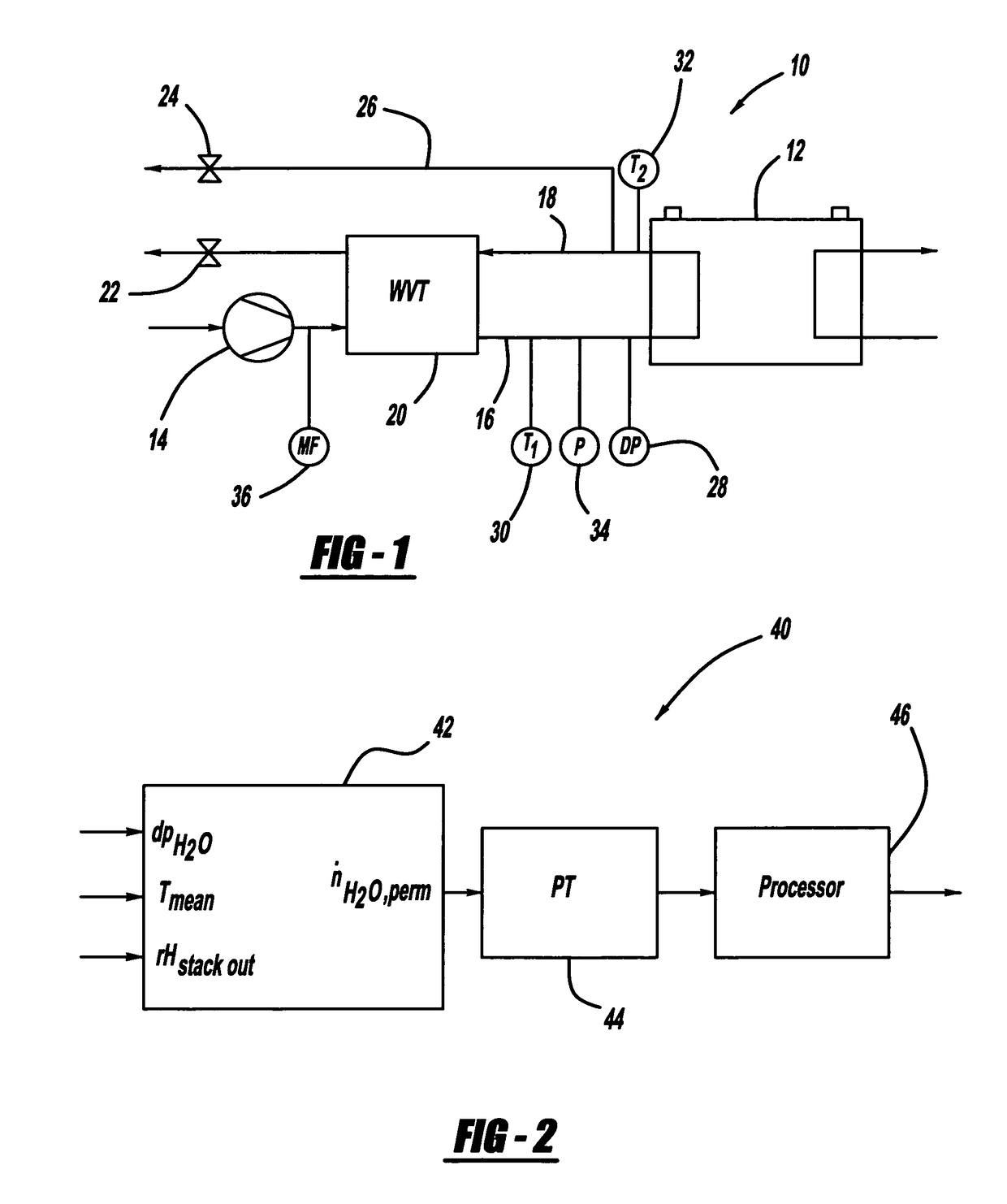Sensorless relative humidity control in a fuel cell application
a technology of relative humidity control and fuel cell, which is applied in the direction of cell components, electrochemical generators, cell component details, etc., can solve the problems of inability to accurately determine the relative humidity of the cathode input airflow, the inability to provide the required accuracy of dew-point sensors in automotive applications, and the relative cost of sensors
- Summary
- Abstract
- Description
- Claims
- Application Information
AI Technical Summary
Benefits of technology
Problems solved by technology
Method used
Image
Examples
Embodiment Construction
[0017]The following discussion of the embodiments of the invention directed to a technique for modeling a water vapor trap unit in a fuel cell system to determine the relative humidity of a cathode input airflow is merely exemplary in nature, and is in no way intended to limit the invention or its applications or uses.
[0018]According to the present invention, a method for estimating the transferred flow of the water through the WVT unit 20 is disclosed that can be used to determine the relative humidity of the cathode input airflow to the stack 12 on the line 16. From the transferred water flow estimation, the temperature of the airflow, the pressure in the input line 16 and the position of the control valves 22 and 24, the relative humidity of the cathode input airflow can be calculated. By adding the product water mass flow to the cathode airflow, the estimation of the stack outlet relative humidity can be determined by knowing the temperature and pressure. The flow distribution o...
PUM
| Property | Measurement | Unit |
|---|---|---|
| relative humidity | aaaaa | aaaaa |
| volume flow | aaaaa | aaaaa |
| activation energy | aaaaa | aaaaa |
Abstract
Description
Claims
Application Information
 Login to View More
Login to View More - R&D
- Intellectual Property
- Life Sciences
- Materials
- Tech Scout
- Unparalleled Data Quality
- Higher Quality Content
- 60% Fewer Hallucinations
Browse by: Latest US Patents, China's latest patents, Technical Efficacy Thesaurus, Application Domain, Technology Topic, Popular Technical Reports.
© 2025 PatSnap. All rights reserved.Legal|Privacy policy|Modern Slavery Act Transparency Statement|Sitemap|About US| Contact US: help@patsnap.com

